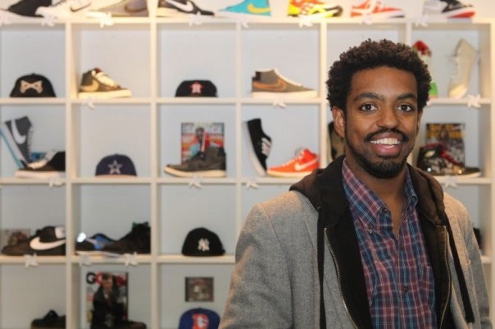
Before I started working with Bazaarvoice, I launched my own sneaker boutique in Downtown Austin and launched a fashion showcase at South by Southwest focusing on up-and-coming designers. Needless to say, style is a big passion of mine and I’m always looking for new ways to champion the democratization of the fashion industry. Relying on the voice of the customer has been one of the great contributors to this worldwide movement that is resulting in more upstart brands and boutiques like the one I ran.
My boutique specialized in limited-edition sneakers, which often turned into collector’s items before ever being worn. Because these shoes were often rare and bizarre looking, prospective customers would often wonder if the shoes actually looked good on them. They only somewhat trusted me because I was the guy selling them the shoes. For that reason, whenever someone was trying a new pair on I’d hope for one of my regular customers to walk in at just that moment and say something like, “oh, those look awesome!” Why? Because about 90 percent of the time, such a customer-to-customer interaction led to a sale in my shop.
Have you ever gone into a local clothing boutique, perhaps to buy a new outfit for a special occasion, had something catch your eye, but remained uncertain of whether or not it would make a good purchase? Maybe you’d never heard of the brand or designer, or you weren’t positive the fabric was durable or if it would shrink in the wash. Maybe you weren’t completely certain it looked as good on you as you first thought when you laid eyes on it through the window. This uncertainty is one of the primary reasons why both local boutique shoppers and the online shoppers of major retailers frequently leave without completing their purchases.
What I learned in my sneaker boutique, and in hosting a SXSW event showcasing designers that most consumers had never heard of, is that customer uncertainty is best addressed with the opinions of other customers. When one of my best customers walked in, I didn’t even have to say anything to the hesitant customer because that peer-to-peer interaction trumped just about anything I could’ve said. In that instance, hearing a complete stranger say, “oh, those look awesome!” is the right amount of affirmation for most unsure shoppers.
So what does this mean for major retailers looking to get the business of hesitant buyers? For starters, it means marketing alone (no matter how creative) can’t offset all of a customer’s uncertainty about a new product. This uncertainty leads to hesitancy in completing online orders. The perspective of a fellow customer can help to reduce this hesitancy and increase online conversion just as it does in small boutiques. In fact, an eConsultancy survey found that 70% of online consumers trust the opinions of people they don’t know.
Before the rise of user-generated content, and the proper tools to leverage it, multi-million dollar retailers struggled with ways to reduce a customer’s uncertainty during online shopping. There are still plenty of differences between what happens when a customer buys a product in the local boutique versus online through a major clothing retailer, but the similarities – the voice of the customer – are much more important. Having the ability to greet an active shopper with valuable content from other shoppers like them (when a physical one is not available) gives retailers the opportunity to maintain the power of those hesitancy-reducing voices.
Doing so, we’ve come to learn, is what is enabling larger sellers of clothing and accessories to be a part of the growing democratization of the fashion industry, in which we see more up-and-coming boutiques and brands in the market, less ability to differentiate through traditional print and broadcast advertising and increased emphasis on what fellow shoppers are saying.
For local boutiques, this means they’ll need to keep their ears to their customers in their stores (and pray their best customers keep coming back), but for major retailers it means they’ll need to keep their eyes peeled for opportunities to foster an environment that is flexible to customers and their voices.